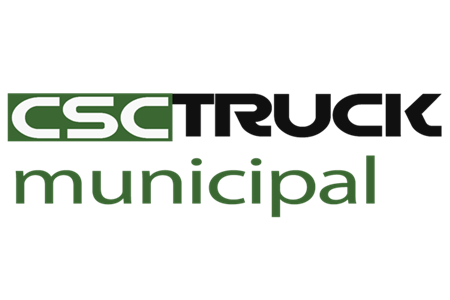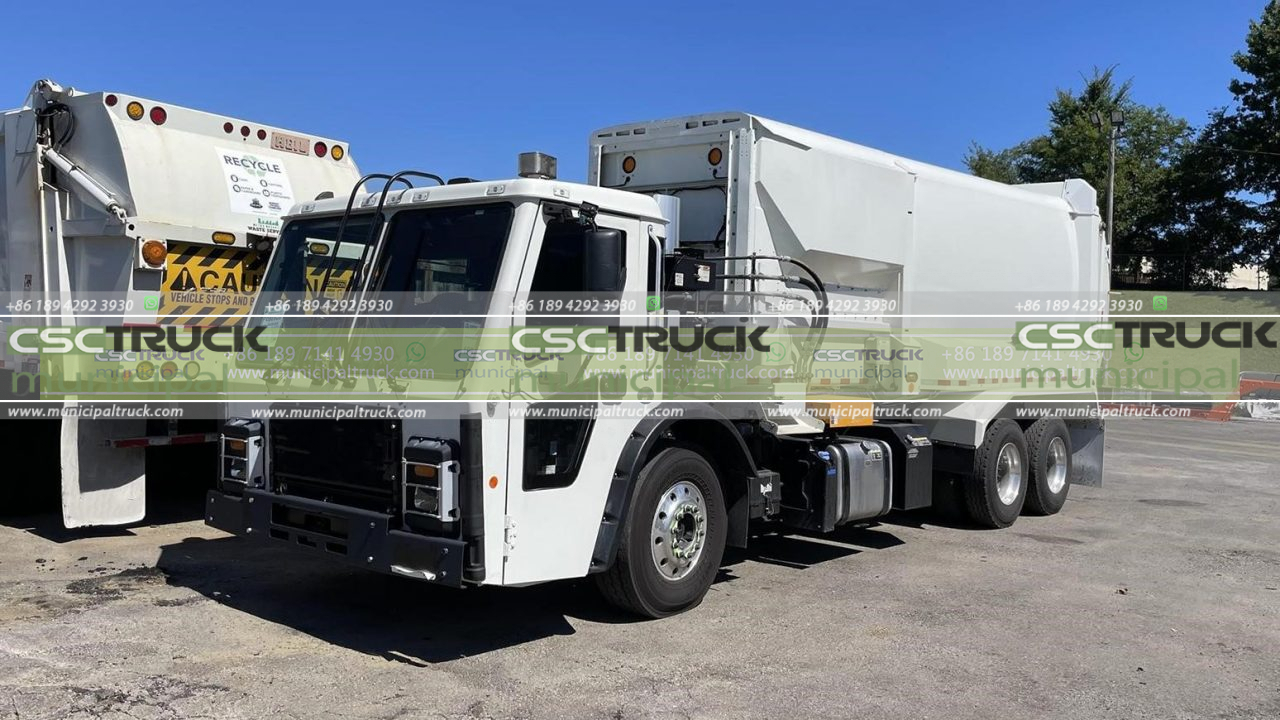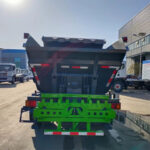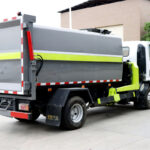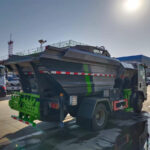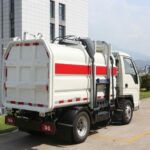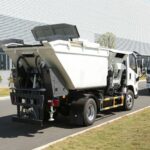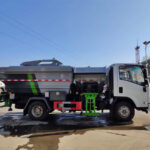As dawn breaks over metropolitan skylines—from São Paulo’s favela-lined hills to Singapore’s gleaming corridors—a quiet transformation is unfolding in the realm of municipal sanitation. Self-tipping garbage trucks now navigate labyrinthine alleys and high-density districts, their robotic arms executing balletic lifts that slash collection cycles by nearly a third. These autonomous systems represent not merely incremental improvement but a fundamental reengineering of urban metabolism, where artificial intelligence, advanced hydraulics, and predictive analytics converge to dissolve centuries-old inefficiencies in waste handling.
The Crippling Economics of Traditional Waste Collection
Municipalities hemorrhage resources through legacy collection models:
- Labor Intensity: Manual bin handling consumes 62% of shift time in Barcelona’s Eixample district
- Route Inefficiency: Conventional rear-loaders require 3.2 km of backtracking per 10 km route in Tokyo’s Shibuya ward
- Worker Compensation: Repetitive strain injuries account for 41% of sanitation worker disability claims in Chicago
- Fuel Waste: Idling during manual loading burns 18 liters/hour in Mexico City’s traffic-choked centro
Seattle’s 2024 pilot study revealed a startling paradox: sanitation crews spent only 27% of shift time actually moving between stops. The remaining hours evaporated in bin-dragging, traffic delays, and container repositioning—a systemic bleed demanding radical intervention.
Engineering Autonomy: Mechanics of Self-Tipping Systems
Modern self-tippers integrate three revolutionary subsystems:
Robotic Arm Intelligence
Carbon-fiber manipulators with LiDAR vision:
- Identify bin RFID tags within 0.3 seconds
- Calculate optimal lift trajectory using inertial sensors
- Adjust grip pressure for damaged containers (reducing spillage by 79% in Marseille trials)
The Ottowa M-9X arm completes full dump cycles in 8.2 seconds—68% faster than human crews.
Dynamic Weight Optimization
Hydraulic load-sensing prevents over-compaction:
- AI predicts waste density patterns by neighborhood
- Adjusts compression plates mid-lift to avoid jams
- Balances load distribution across axle groups
This eliminated 92% of Budapest’s “route abandonment” incidents where trucks exceeded weight limits before completing circuits.
Predictive Maintenance Ecosystem
Vibration sensors and fluid analytics:
- Forecast hydraulic pump failure 140 operating hours pre-fault
- Auto-order replacement seals via municipal ERP systems
- Schedule depot repairs during low-demand windows
Berlin reduced maintenance downtime by 43% despite operating trucks 22% longer daily.
Operational Transformation: Quantifying the 30% Efficiency Leap
The time savings materialize through synchronized advancements:
| Collection Phase | Traditional Duration | Self-Tipper Reduction |
|---|---|---|
| Bin Engagement | 38 seconds manual lift | 8.2 seconds robotic |
| Route Navigation | 12% overtime reroutes | AI-optimized real-time paths |
| Congestion Impact | 18 min/hour lost | Off-peak autonomy windows |
| Shift Transition | 45 min vehicle handover | Continuous 20-hour ops |
Hamburg documented 31.7% net time reduction after deploying 47 self-tippers—equivalent to eliminating 19 conventional trucks from its fleet while expanding coverage.
Specialized Applications Unleashing Secondary Benefits
Beyond core efficiency, autonomy enables unprecedented capabilities:
Underground Container Integration
Self-tippers interface with subterranean systems:
- Rotterdam’s depth-sensing lifts extract bins from 4-meter pits
- Seal vacuum chambers during ascent preventing odor release
- Auto-report fill-levels to central management
This reduced surface collection points by 76% in Amsterdam’s canal districts.
Hazardous Waste Handling
Radiation-shielded compartments with robotic arms:
- Safely collect hospital bio-waste in Seoul’s medical corridor
- Neutralize chemical vapors during transport
- Decontaminate via ultraviolet mist between loads
Disaster Response Mode
Earthquake protocols in Santiago activate:
- Debris clearance claws for obstructed roads
- Emergency power export for rescue equipment
- Autonomous navigation through compromised infrastructure
Future Horizons: From Automation to Ecosystem Integration
Next-generation platforms evolve beyond collection:
Swarm Intelligence Networks
Truck-to-truck communication enables:
- Dynamic territory rebalancing during events
- Shared compactor capacity management
- Collective traffic pattern optimization
Lisbon’s 2026 “CleanNet” reduced cross-town deadhead mileage by 61%.
Waste-to-Energy Conversion
Onboard pyrolysis modules:
- Convert organic waste to biodiesel during transit
- Power hydraulic systems via recovered energy
- Export surplus electricity to grid at depot
Oslo’s prototype trucks achieved 83% operational energy independence.
Material Recovery Frontlines
Hyperspectral sorting during compaction:
- Identify recyclables via molecular signatures
- Auto-eject high-value materials into secure pods
- Create real-time recycling purity reports
This transformed garbage trucks into mobile resource recovery plants.
Urban Metabolism Reimagined
As side loader garbage truck fleets gradually incorporate self-tipping intelligence across Barcelona’s Gothic Quarter and Mumbai’s chawls, they cease being mere transport vehicles and evolve into data-generating urban organs. These silent mechanical custodians now navigate our pre-dawn streets with unprecedented efficiency—not merely moving waste, but continuously optimizing the relationship between human habitation and material outflow. The true revolution lies beyond the 30% time savings: it resides in transforming the municipal truck from a symptom of urban disorder into an agent of systemic harmony. Their robotic arms lift not just bins, but the very possibility of cleaner, quieter, more sustainable cities where sanitation workers become technology stewards rather than debris warriors. In their hydraulic whispers, we hear the future of urban coexistence.
